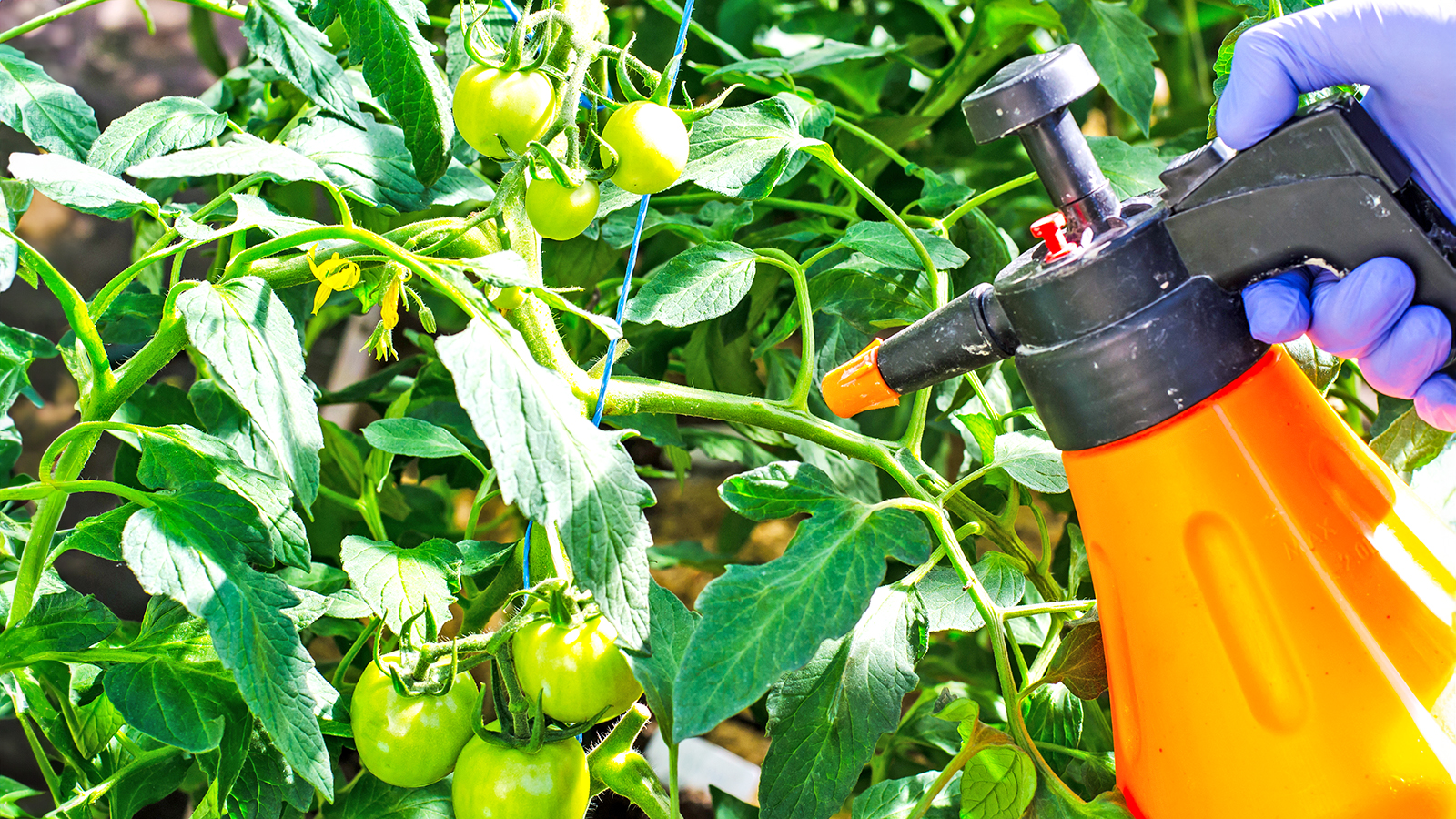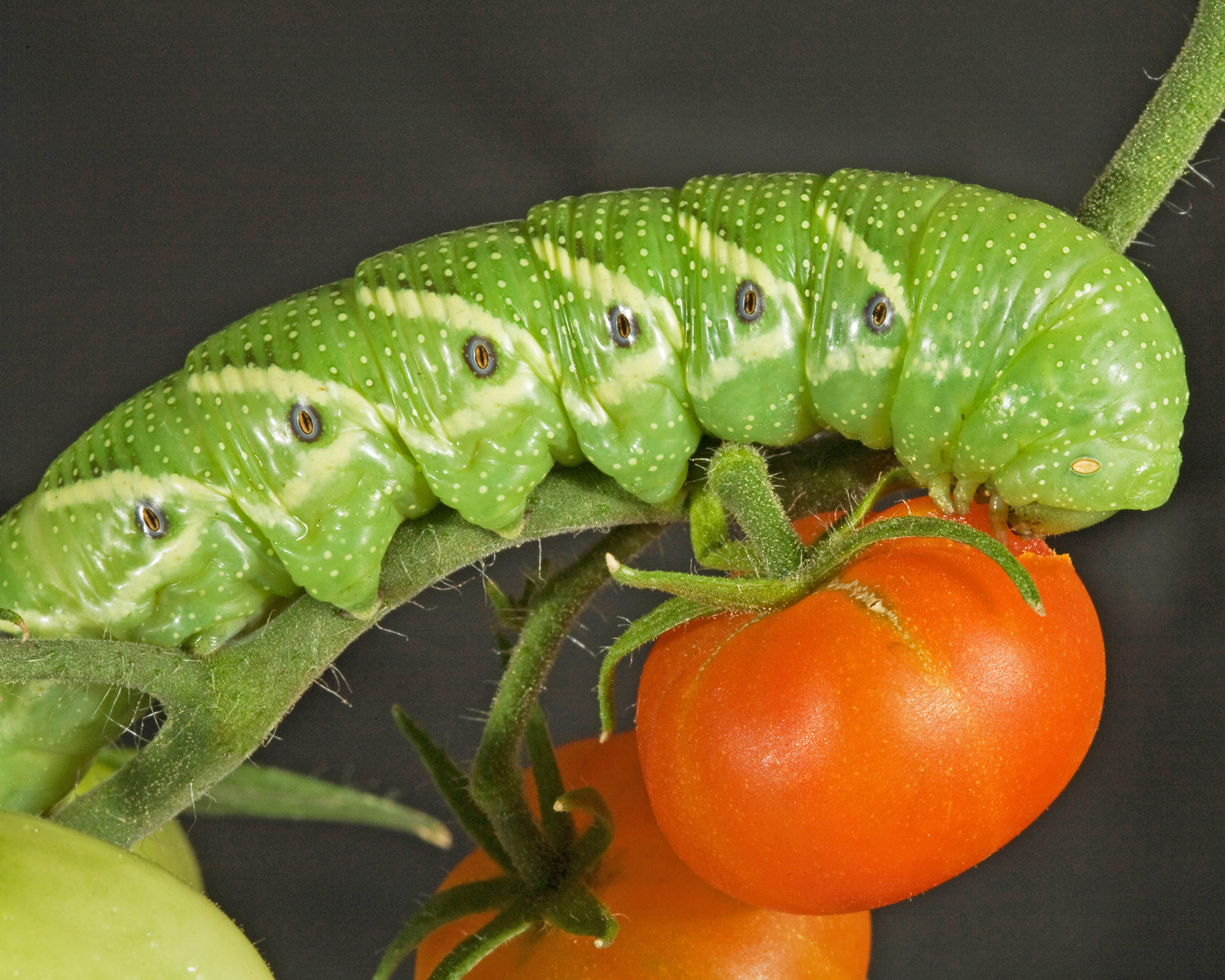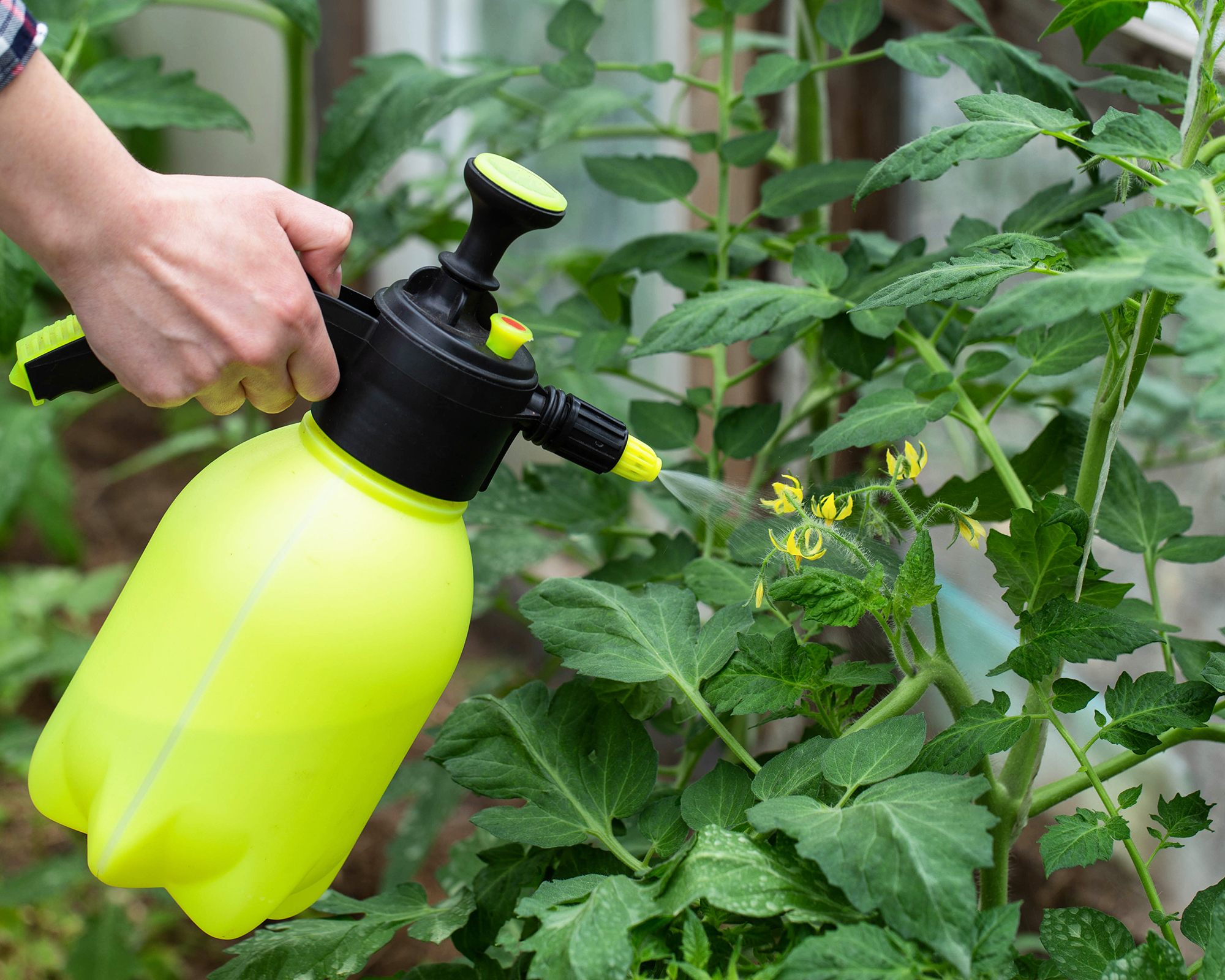Homemade Bug Spray for Tomato Plants: 3 Easy Recipes to Stop Pests and Save Your Veggie Garden
Keep pests from ruining your precious tomatoes with these simple, effective homemade sprays – no harsh chemicals, just natural solutions that work.


Tomatoes are pretty easy to grow with plenty of sunlight, water, and nutrient-rich soil, but pests are always a potential issue. Several types of pests have a taste for tomato plants and may cause anything from a minor inconvenience to total destruction. But while it may be tempting to use harsh chemical pesticides in your vegetable garden, consider natural solutions instead. A homemade bug spray for tomato plants will deter or kill pests while keeping your tomatoes safe and edible.
Pesticides on tomato plants can contaminate the food you’re eating and harm or kill beneficial insects. Many tomato plant pests can be removed manually without using any products at all. For instance, you can handpick caterpillars to remove them from tomato plants, while numerous pests, like aphids, can be sprayed off with a strong stream of water. But for the rest, a natural spray is the best option.
Whether you're just learning how to grow tomatoes or have many successful harvests under your belt, it's a good idea to learn these simple recipes to keep pests away.
Pests That Target Tomatoes
Insects on or around your tomato plants are not always an issue. You might see neutral or beneficial insects, like ladybugs or lacewings. These common pests, however, should be identified and managed:
- Aphids are among the most common pests in the garden and on tomatoes. They are very small and often clustered on the undersides of leaves. They suck sap out of the leaves and leave behind honeydew, a substance that encourages fungal growth. This makes aphids on tomato plants doubly damaging.
- Spider Mites are also very small and cluster on the undersides of leaves. They feed on the leaves, causing yellow, then brown discoloration.
- Whiteflies are often not noticeable until you see your tomatoes ripening irregularly as they feed on the fruit. Managing aphids and mites on the undersides of leaves will also help you manage whiteflies.
- Colorado Potato Beetles feed on all members of the nightshade family. Adults are easily identified by their striped bodies. Larvae have two rows of black spots.
- Flea Beetles are small and hard to see, but you might spot them as they jump when disturbed. They feed on and leave irregular holes in tomato leaves and stems.
- Tomato hornworms are among the most recognizable of tomato pests. They are green caterpillars with white stripes and a “horn” on the second-to-last body segment. They can rapidly eat their way through a tomato plant.
- Cutworms are also caterpillars that are black and easier to spot. Look for them at night when they feed on seedlings and young tomato plants.
- Armyworms eat both leaves and tomato fruits, leaving holes behind. The caterpillars are gray to black with a long, yellow stripe.

Natural Pest Spray Recipes
If you don’t want to use pesticides, and if your efforts to manually remove pests on tomato plants have come up short, try some of these safe and simple natural sprays. Bear in mind that some natural ingredients can kill, rather than just repel, insects, so in these instances, you should identify the pests before spraying. Also, apply them early in the morning or late evening when pollinators and other beneficial insects are less active.
1. Dish Soap Spray
A homemade soap spray is an easy way to manage the small, soft-bodied pests that attack tomato plants, like aphids and spider mites. To make a dish soap spray, dissolve one tablespoon of a mild, pure dish soap in a quart of water. Do not use dish soap products with added ingredients like bleach or degreaser.
If the pests don’t respond as well to a simple dish soap spray as you would like, add vegetable oil, which smothers pests. This offers a double punch to tough pests. Mix a tablespoon of dish soap with a cup of oil. Add a few teaspoons of the master mix to a quart of water to make the spray.
Sign up for the Gardening Know How newsletter today and receive a free copy of our e-book "How to Grow Delicious Tomatoes".
If you have a lot of plants to cover, then it will be much easier to spray plants using a pressured sprayer, such as this Chapin 1-gallon lawn and garden pump pressured sprayer from Amazon.
Spray the mix all over affected tomato plants, including on the undersides of leaves. Reapply after it has dried and as needed to manage the problem. Soap is not a harsh chemical that will harm a lot of insects, but try to keep it localized to the affected plants to minimize harm. Once you see a significant decrease in the pest in question, give the plants a good rinse with fresh water.

2. Chili Pepper Spray
A spicy cayenne pepper spray is a universal pest deterrent, so use it for any kind of pest that eats your tomato plants. This includes the caterpillars that feed on the leaves and fruits. Just be sure to wash off any remaining residue before you enjoy the tomatoes if you don’t want a spicy surprise.
To make a homemade pepper spray, mix one to two tablespoons of cayenne pepper in a quart of water. Add a few drops of dish soap to help the mixture stick to the plant. Spray the entire plant, including stems, all sides of the leaves, and any fruits that have developed so far.
3. Garlic Spray
A homemade garlic spray helps deter pests through both smell and taste. Some gardeners find the smell a little off-putting, but garlic is effective at deterring many tomato pests, so it might be worth putting up with.
Finely chop or blend 8 to 10 garlic cloves and cover with enough water to make one quart. Let the mixture sit overnight and then strain out the garlic. Use the remaining liquid in a spray bottle to cover your tomato plants from top to bottom.
If you want your spray to pack an extra punch against insect pests, then add a few drops of neem oil, available on Amazon, to the solution. This oil is one of the most effective natural pest control solutions.
Chemical pesticides are an easy solution to pests, but they’re also damaging and dangerous. They’re also not necessary. It’s possible to grow a healthy, bountiful tomato crop with these few, simple, and natural ingredients.
Want to know more about growing your own tomatoes? Sign up for the Gardening Know How Newsletter and receive a free copy of our e-book How to Grow Delicious Tomatoes.

Mary Ellen Ellis has been gardening for over 20 years. With degrees in Chemistry and Biology, Mary Ellen's specialties are flowers, native plants, and herbs.